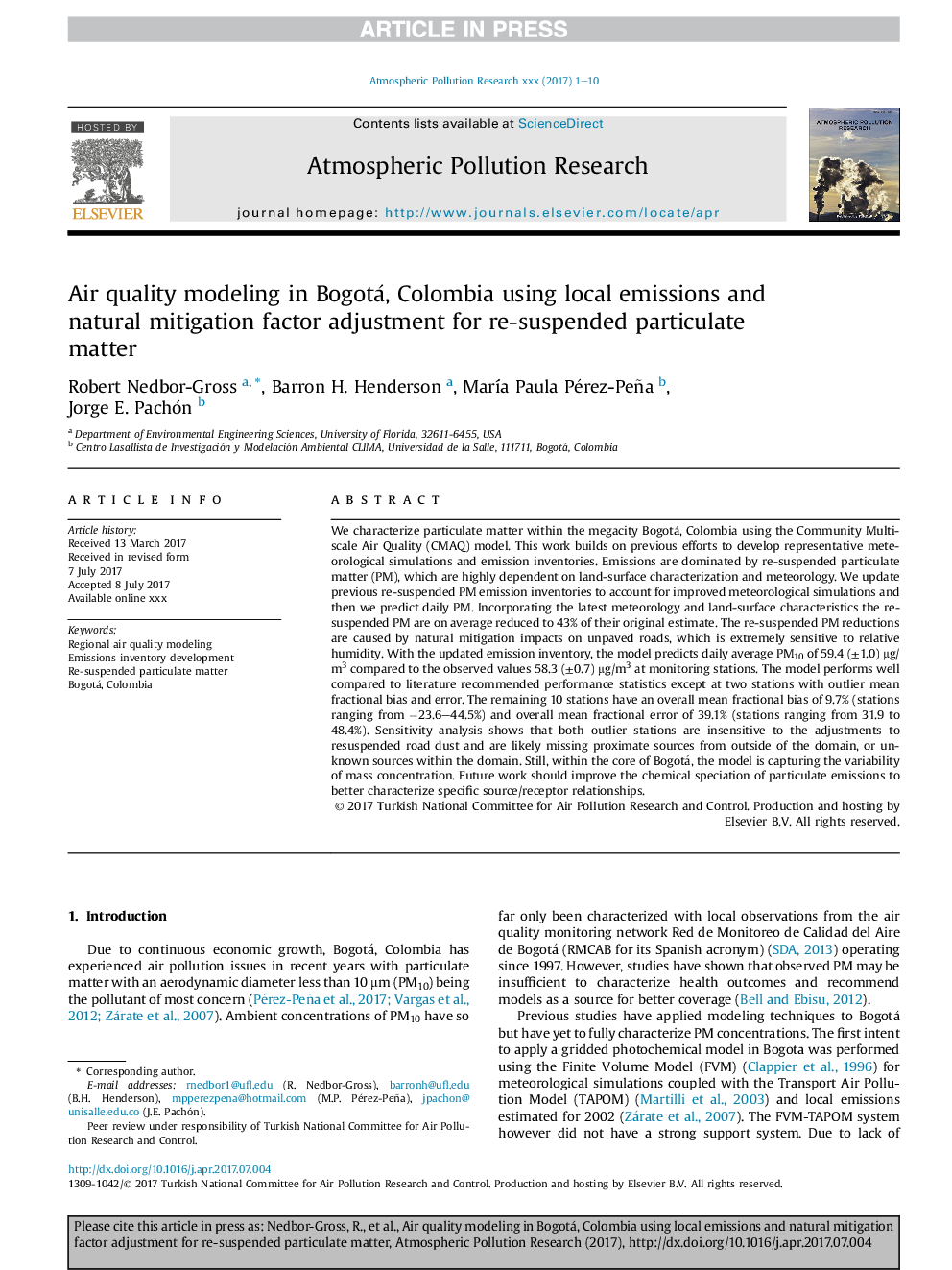| Article ID | Journal | Published Year | Pages | File Type |
|---|---|---|---|---|
| 8862675 | Atmospheric Pollution Research | 2018 | 10 Pages |
Abstract
We characterize particulate matter within the megacity Bogotá, Colombia using the Community Multi-scale Air Quality (CMAQ) model. This work builds on previous efforts to develop representative meteorological simulations and emission inventories. Emissions are dominated by re-suspended particulate matter (PM), which are highly dependent on land-surface characterization and meteorology. We update previous re-suspended PM emission inventories to account for improved meteorological simulations and then we predict daily PM. Incorporating the latest meteorology and land-surface characteristics the re-suspended PM are on average reduced to 43% of their original estimate. The re-suspended PM reductions are caused by natural mitigation impacts on unpaved roads, which is extremely sensitive to relative humidity. With the updated emission inventory, the model predicts daily average PM10 of 59.4 (±1.0) μg/m3 compared to the observed values 58.3 (±0.7) μg/m3 at monitoring stations. The model performs well compared to literature recommended performance statistics except at two stations with outlier mean fractional bias and error. The remaining 10 stations have an overall mean fractional bias of 9.7% (stations ranging from â23.6-44.5%) and overall mean fractional error of 39.1% (stations ranging from 31.9 to 48.4%). Sensitivity analysis shows that both outlier stations are insensitive to the adjustments to resuspended road dust and are likely missing proximate sources from outside of the domain, or unknown sources within the domain. Still, within the core of Bogotá, the model is capturing the variability of mass concentration. Future work should improve the chemical speciation of particulate emissions to better characterize specific source/receptor relationships.
Keywords
Related Topics
Physical Sciences and Engineering
Earth and Planetary Sciences
Atmospheric Science
Authors
Robert Nedbor-Gross, Barron H. Henderson, MarÃa Paula Pérez-Peña, Jorge E. Pachón,
